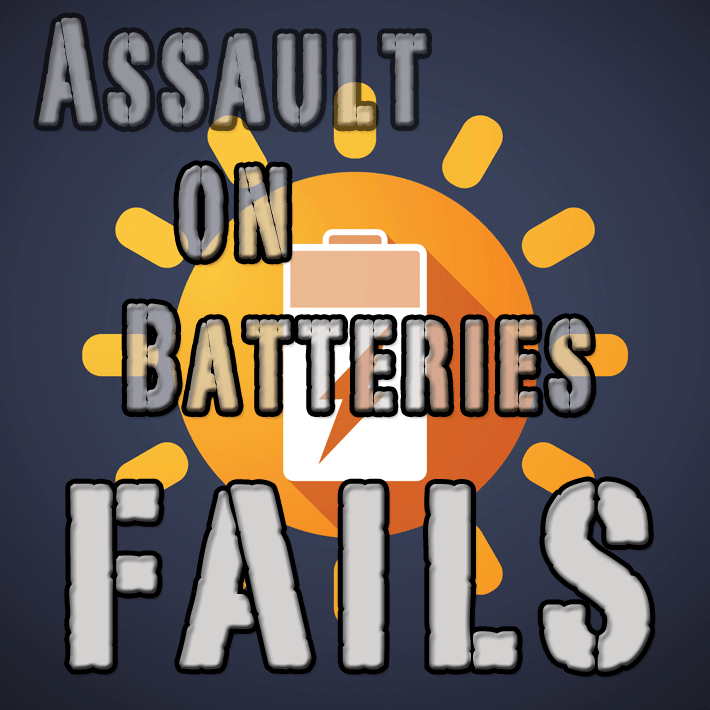
A Pyrrhic
victory occurs when the winner of a fight suffers such losses that
their win is actually comparable to a defeat.
No
doubt, losses in that measure negate or outweigh any achievement that
may have been the goal of the conflict in the first place.
The term could apply to the battle the Portable
Rechargeable Battery Association (PRBA), National Electrical Manufacturers
Association (NEMA), and others mounted to win the day at the ICAO Dangerous
Goods Panel meeting, which took place from October 19th to October 30th
in Montreal, Canada.
Assault
On Batteries Fails
Since the report of the meeting
has not yet been released (but based on leaks is not a well kept secret,
either), it is prudent to remember in all of this that we will have to
wait for the official paper.
ICAO’s bureaucracy is grinding fine but
slow, so the in-depth analysis for FT’s readers will have
to wait.
However, at the center of the action has been
the question of whether or not stricter regulations should be imposed
on the transport of lithium batteries by air.
Papers
To Sort
Under consideration more specifically
are a multitude of working papers related to the transport of lithium
batteries and the associated risks.
ICCAIA, the interest group of the aircraft manufacturers
representing Boeing, Bombardier, and Airbus, and IFALPA, the International
Federation of Airline Pilots, had teamed up, arguing that the tests undertaken
in February 2014 at the FAA’s William J. Hughes Test Center sufficiently
illustrated that a lithium battery cargo fire would likely be uncontrollable,
and thus ‘fatal.’
FT had covered these issues for
our readers in May 2015's Pilots
Want Lithium Cargo Revamp and August 2015's A
MidSummer's Lithium Dream—they may want to refresh their memories.
Risky
Business
After Lithium metal batteries
(deemed the bigger risk because of their more volatile nature and higher
burn temperatures) were outlawed worldwide effective January 1st, 2015,
on passenger aircraft (a limitation in effect within the U.S. for decades),
Lithium ion batteries were under scrutiny, especially bulk shipments of
the so-called “excepted” batteries in accordance with section
II of the applicable packing instruction which require no formal training
on the side of the shipper and no formal transport document.
What
Happened?
Attendees of the ICAO DGP meeting
make the point that there “is a tight cap on all talks with the
press” and that “quite some pressure had been applied prior
to heated discussions,” confirmed that, indeed, the combined ICCAIA/IFALPA
proposal had been rebuffed.
Ups
& Downs
Surprisingly, sources tell FT
that the People’s Republic of China—the biggest manufacturer
of both legit and illicit lithium batteries— together with Russia,
Brazil, and Spain voted with the U.S. representative to ICAO in favor
of the ban. On the other side sources say Australia, Canada, France, Italy, The
United Arab Emirates, The Netherlands, The United Kingdom, South Korea,
and Japan vetoed the proposal along with airline watchdog and interest
group IATA.
While the latter may seem surprising to the outsider,
IATA’s industry-friendly position toward lithium batteries has a
long tradition, although it is not shared by a considerable faction of
IATA’s members, accounting for a sizable chunk of the worldwide
air transport capacity.
Checking the record of IATA members, today an
ever-growing number of airlines have filed variations (imposing further
restrictions or embargoing) related to the transport of both Lithium metal
and Lithium ion batteries either shipped in bulk or installed in equipment.
Lufthansa (LH), Cargolux (CV), Air France (AF),
KLM (KL), British Airways (BA,) and Delta Airlines (DL) are just some
of the carriers who have filed variations.
Others have imposed further restrictions without
filing variations in the manuals.
Questions
Need Answering
Although IATA was instrumental
in developing a comprehensive and encompassing document that enables and
guides airlines in their individual risk assessment pertaining to the
carriage of Lithium batteries (IATA Lithium Batteries Risk Mitigation
Guidance for Operator), valid questions remain with respect to how accurate
that assessment can be when most likely the majority of Lithium batteries
carried are not required to be shown on the Notification to Captain (NOTOC)
or Notification to Pilot-in-Command (NOPIC) and thus travel under the
airline’s radar.
Another point—where common ground allows
everyone including PRBA and NEMA to agree—is that the biggest problem
is either counterfeit batteries (which have never undergone the required
testing in accordance with part III, subsection 38.3 of the UN Manual
of Tests and Criteria) or Lithium batteries willfully or negligently undeclared
or misdeclared.
In reality, they are often identical.
Results
That Affect Everyone
There is one direct and
one indirect result of this as yet unannounced decision from ICAO that
will impact both the shippers and the airline industry:
Packing Instruction 965, covering the transport
of Lithium Ion Batteries in its 2016 version, will include three headlines
to cover airline variations.
But truthfully, while the upcoming ICAO decision
has theoretically kept shipping options open for shippers and consumers,
the practice looks different, since airlines are under no obligation to
carry any particular substance or article.
Indirectly, since no one is able to rule out
a ‘fatal’ lithium battery fire scenario and because there
is some likelihood that the root cause may not even be found in a scenario
where an aircraft is lost, the aircraft manufacturers’ statement
that today’s airframes are not designed to withstand a Lithium battery
fire may have far-reaching implications on insurance costs.
Although everyone without a doubt hopes that
the worst never happens, the apparent dismissal of the opinion of aircraft
manufacturers, airline pilots, and the US FAA could at some time backfire.
It’s safe to say the current divided state
of the industry in safety matters benefits neither consumers and shippers
nor the industry.
Jens
|



